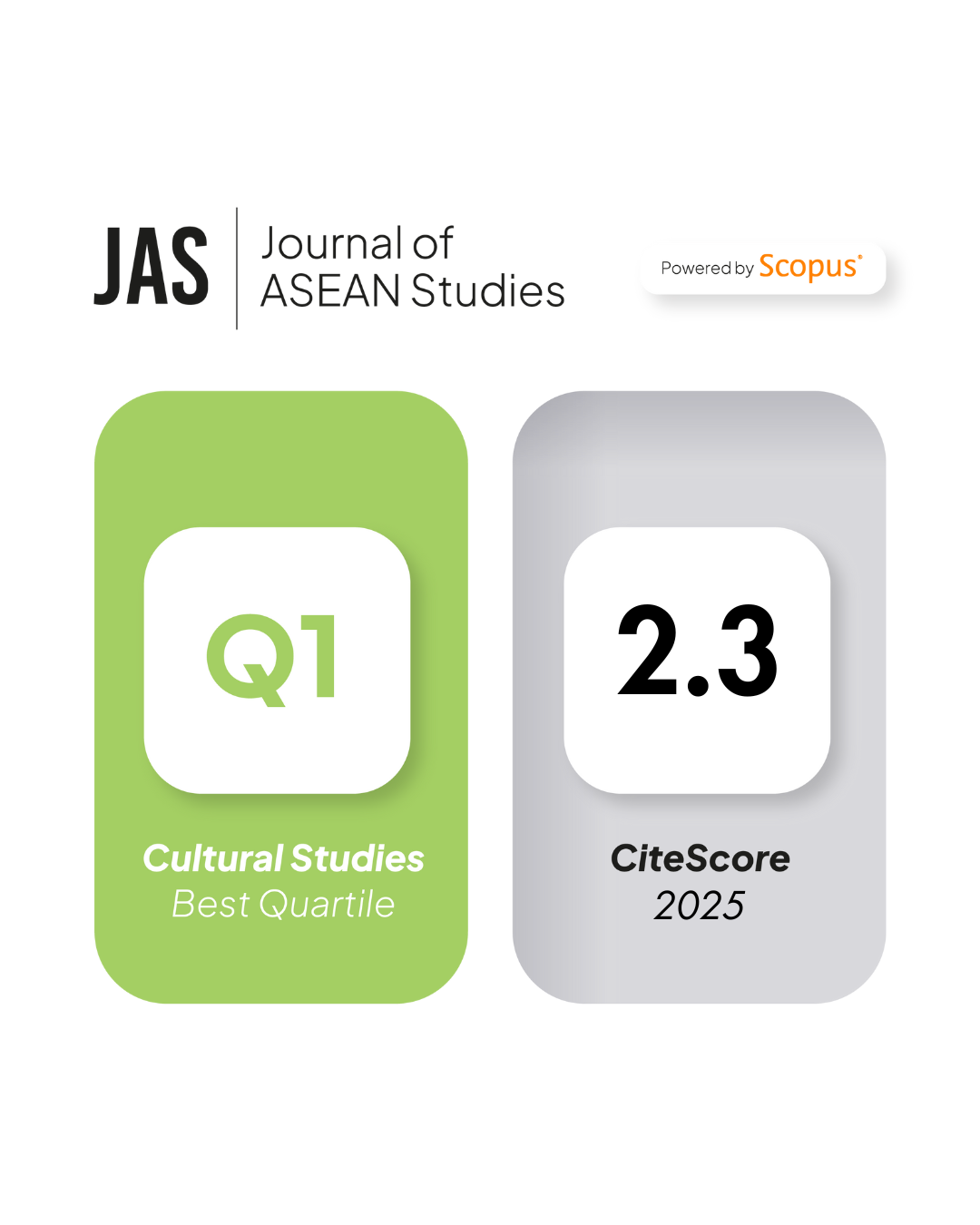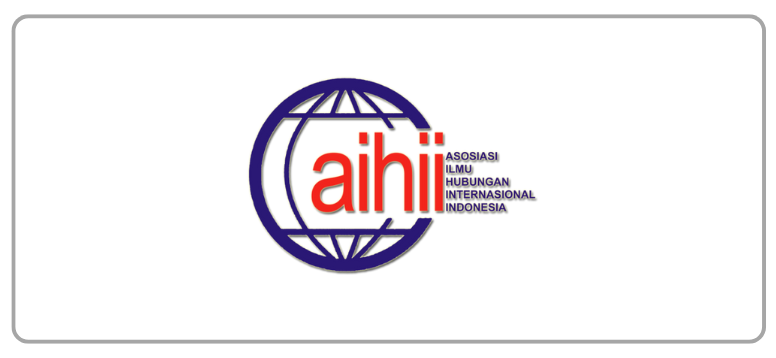Building Indonesia Through ASEAN Economic Community
DOI:
https://doi.org/10.21512/jas.v8i1.6040Keywords:
ASEAN, economic community, IndonesiaAbstract
As the interdependent global economy increased, ASEAN responded with the creation of ASEAN Economic Community (AEC). The AEC is expected to become the ASEAN arena of learning regional economic integration before entering the global integration. Indonesia, as the largest country in the region, should be a natural leader. However, the level of investment in Indonesia was lost to Singapore and several other ASEAN countries, thus Indonesia should see the potential of the AEC and maximize it to benefit the strengthening of Indonesia's strength. This research aimed to explain the AEC background, the potentials and challenges of the AEC, the AEC 2015 and 2025 comparisons. Using qualitative methods with inductive logical thinking, and constructivism as the analysis framework, the result shows that AEC 2025 is believed to be the integration of the regional economy with a dynamic and sustainable process. Thus, Indonesia can strengthen its position in AEC 2025, using a constructivism approach to reform Indonesian identity into the structure.
References
Acharya, A. (2014). Rethinking Power, Institutions, and Ideas in World Politics. London: Routledge.
Adler, E. (1997). Seizing the middle ground: Constructivism in world politics. European Journal of International Relations, 3, 319.
ASEAN. (2018a). AEC Chartbook 2017.
http://www.aseanstats.org/wp-content/uploads/2018/01/AEC_Chartbook_2017.pdf
ASEAN. (2018b). ASEAN Economic Community. http://investasean.asean.org/index.php/page/view/asean-economic-community
ASEAN. (2018c). ASEAN Free Trade Area Agreements. http://investasean.asean.org/index.php/page/view/asean-free-trade-area-agreements/view/757/newsid/870/asean-framework-agreement-on-services.html
ASEAN Secretariat. (2008). ASEAN Economic Community Blueprint. Jakarta: ASEAN Secretariat. https://asean.org/wp-content/uploads/archive/5187-10.pdf
ASEAN Secretariat. (2015). ASEAN Economic Community Blueprint 2025. Jakarta: ASEAN Secretariat. https://www.asean.org/storage/2016/03/AECBP_2025r_FINAL.pdf
ASEAN Secretariat. (n.d.). ASEAN: A Community of Opportunities. Jakarta: ASEAN Secretariat. http://tariff-finder.asean.org/
ASEAN Secretariat. (2019a). ASEAN Economic Integration Brief. Jakarta: ASEAN Secretariat. https://www.bloomberg.com/news/arti-
ASEAN Secretariat. (2019b). Factsheet ASEAN Economic Community. Jakarta: ASEAN Secretariat. https://asean.org/storage/2012/05/41.-December-2019-FAct-Sheet-of-AEC.pdf
ASEAN Secretariat. (2019c). Investing in ASEAN 2019-2020. Jakarta: ASEAN Secretariat. https://asean.org/storage/2019/10/Investing_in_ASEAN_2019_2020.pdf
Balassa, B. (1961). The Theory of Economic Integration (Routledge Revivals). London: Routledge.
Burchill, S., Linklater, A., Devetak, R., Donnelly, J., Paterson, M., Reus-Smit, C., & True, J. (2005). Theories of International Relations (3rd Ed.). New York: Palgrave Macmillan.
Creswell, J. W. (2009) Research Design: Qualitative, Quantitative, and Mixed Method Approach (3rd Ed.). Los Angeles: SAGE Publication Inc.
Finnemore, M. & Sikkink, K. (2001). Taking stock: The constructivist research program in International relations and comparative politics. Annual Review of Political Science, 4, 391–416.
Hettne, B. & Soderbaum, F. B. (1998). The New Regionalism Approach. Politeia, 17(3), 6-21.
Jayasuriya, K. (2003). Embedded mercantilism and open regionalism: The crisis of a regional political project. Third World Quarterly, 24(2), 339–355.
Katzenstein, P. J. (1996). The Culture of National Security: Norms and Identity in World Politics. New York: Columbia University Press.
Keohane, R. O. (1984). After Hegemony: Cooperation and Discord in The World Political Economy. Princeton, New Jersey: Princeton University Press.
Maria, R. S., Urata, S, & Intal, Jr., P. S. (2017). The ASEAN economic community into 2025 and beyond. In R.S. Maria, S. Urata, P.S. Intal Jr (Ed.), ASEAN Economic Community into 2025 Beyond, ASEAN 50 V, pp. 1–63. Jakarta: Research Institute for ASEAN and East Asia (ERIA). https://www.eria.org/ASEAN_50_Vol_5_Complete_Book.pdf
Molchanov, M. A. (2005). Regionalism and globalization: The case of the European Union. Perspectives on Global Development and Technology, 4(3), 431–446.
Nesadurai, H. E. S. (2003). Globalization, Domestic Politics and Regionalism: The ASEAN Free Trade Area. New York: Routledge.
Neuman, W. L. (2014). Social Research Methods: Qualitative and Quantitative Approaches: Relevance of Social Research (8th Ed.). Essex: Pearson.
OECD. (2019). Economic Outlook for Southeast Asia, China and India 2020: Rethinking Education for the Digital Era. OECD Publishing. Paris.
Reed, J. (2018, February 6). Vietnam’s Vingroup takes trip into unknown with first ‘national car’. Financial Times.
Ruggie, J. G. (1998). Constructing the World Polity. London: Routledge.
Söderbaum, F. (2013). Rethinking regions and regionalism. Georgetown Journal of International Affairs, 14(2), 9-18.
Sohn, I. (2008). Learning to co-operate: China’s multilateral approach to Asian financial co-operation. The China Quarterly, 194, 309–326.
Wendt, A. (1992). Anarchy is what states make of it: The of power politics social construction Wendt. International Organization, 46(2), 391–425.
Wendt, A. (1995). Constructing International politics. International Security, 20(1), 71-81.






















